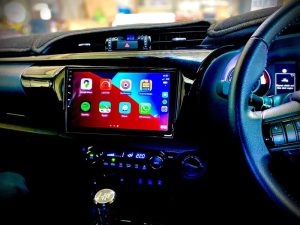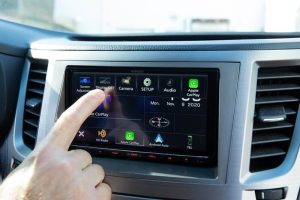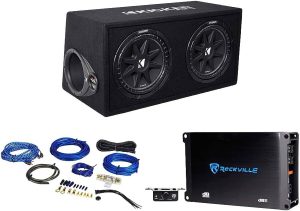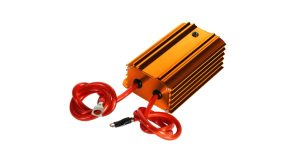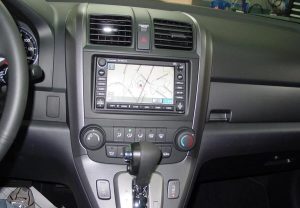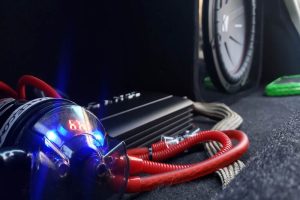When upgrading your car’s audio system, installing a Pioneer head unit often tops the list for its quality sound and modern features. However, a common question arises during installation: Are all Pioneer wiring harnesses the same? The short answer is no, but the full explanation requires diving into the details of Pioneer wiring harnesses, their variations, and how to choose the right one for your vehicle and stereo model. This guide breaks down everything you need to know in a clear, easy-to-understand way, helping you make informed decisions for a seamless car audio upgrade.
Contents
- What Is a Wiring Harness, and Why Does It Matter?
- The Myth of Universal Pioneer Wiring Harnesses
- Key Factors That Differentiate Pioneer Wiring Harnesses
- How to Choose the Right Pioneer Wiring Harness
- Common Pioneer Wiring Harness Issues and Solutions
- Benefits of Using the Correct Pioneer Wiring Harness
- Where to Find Pioneer Wiring Harness Information
- Frequently Asked Questions About Pioneer Wiring Harnesses
- Final Thoughts on Pioneer Wiring Harnesses
What Is a Wiring Harness, and Why Does It Matter?
A wiring harness acts as the backbone of your car stereo installation. It connects the head unit (like a Pioneer stereo) to your vehicle’s electrical system, ensuring power, speakers, and other features function correctly. Think of it as a translator that bridges the gap between your car’s wiring and the stereo’s inputs.
Using the correct wiring harness simplifies installation, prevents electrical issues, and ensures compatibility. Choosing the wrong one can lead to problems like poor sound quality, malfunctioning features, or even damage to your stereo or vehicle. So, understanding the differences between Pioneer wiring harnesses is crucial for a successful setup.
The Myth of Universal Pioneer Wiring Harnesses
Many assume all Pioneer wiring harnesses are interchangeable because they share the same brand. However, this isn’t true. Pioneer designs wiring harnesses to match specific head unit models, and variations exist due to differences in features, model years, and vehicle compatibility.
For example, a wiring harness for a Pioneer AVH series multimedia receiver may differ from one designed for a DEH series single-DIN stereo. The connectors, pin configurations, and supported features (like Bluetooth, USB, or steering wheel controls) vary between models. Ignoring these differences can lead to installation headaches or a non-functional stereo.
Key Factors That Differentiate Pioneer Wiring Harnesses
To understand why Pioneer wiring harnesses aren’t all the same, let’s explore the main factors that set them apart.
1. Head Unit Model and Series
Pioneer produces a wide range of car stereos, from basic single-DIN radios to advanced double-DIN touchscreen receivers. Each series, such as AVH, MVH, DEH, or FH, has unique wiring requirements. For instance, a Pioneer AVH-200EX double-DIN unit may require a 16-pin harness, while an older DEH model might use a 12-pin connector. Always check your head unit’s model number and consult the manual to identify the correct harness.
2. Vehicle Compatibility
Even if two Pioneer stereos use similar harnesses, your vehicle’s wiring system plays a significant role. Cars have different wiring standards based on make, model, and year. For example, a Toyota Camry’s factory wiring differs from a Ford F-150’s. To bridge this gap, you often need a vehicle-specific adapter harness alongside the Pioneer harness. These adapters ensure the stereo integrates seamlessly with your car’s electrical system.
3. Feature Support
Modern Pioneer head units come packed with features like Apple CarPlay, Android Auto, Bluetooth, and steering wheel control integration. These advanced functions require specific wiring configurations. A harness for a basic stereo without Bluetooth won’t support a high-end model with multiple connectivity options. If your harness doesn’t match the head unit’s capabilities, you might lose access to key features.
4. Aftermarket vs. OEM Harnesses
Pioneer wiring harnesses fall into two categories: those included with the head unit (OEM) and aftermarket harnesses designed for specific installations. OEM harnesses are tailored to the stereo but may not connect directly to your vehicle without an adapter. Aftermarket harnesses, often sold by brands like Metra or Scosche, provide vehicle-specific solutions but must match both the Pioneer model and your car.
5. Model Year and Updates
Pioneer frequently updates its head units, and newer models may use different harnesses than older ones. A 2023 Pioneer receiver might have a different pin layout than a 2015 model, even within the same series. Always verify the harness compatibility with your stereo’s model year to avoid mismatches.
How to Choose the Right Pioneer Wiring Harness
Selecting the correct wiring harness for your Pioneer stereo involves a few straightforward steps. Follow these tips to ensure a smooth installation.
Step 1: Identify Your Pioneer Head Unit
Start by checking your stereo’s model number, usually found on the box, manual, or the unit itself. For example, a Pioneer AVH-120BT and an AVH-1300NEX may look similar but could require different harnesses. Cross-reference the model with Pioneer’s official website or the product manual to confirm the harness specifications.
Step 2: Know Your Vehicle’s Wiring
Determine your car’s make, model, and year to identify its wiring standards. Some vehicles use standard ISO connectors, while others have proprietary systems. Online tools like Crutchfield’s vehicle selector or Metra’s wiring guide can help you find the right vehicle-specific adapter harness.
Step 3: Match Features and Functionality
Ensure the harness supports your head unit’s features. If your Pioneer stereo includes steering wheel controls or a backup camera, choose a harness and adapter that accommodate these functions. Brands like iDatalink offer adapters that preserve advanced features during aftermarket installations.
Step 4: Buy from Reputable Sources
Purchase wiring harnesses from trusted retailers like Amazon, Crutchfield, or Best Buy. Avoid generic or unbranded harnesses, as they may lack proper labeling or quality control. Reading customer reviews can also provide insights into compatibility and ease of installation.
Step 5: Consult a Professional if Unsure
If you’re new to car audio installation, consider consulting a professional installer. They can verify compatibility, recommend the right harness, and handle the wiring to prevent costly mistakes.
Common Pioneer Wiring Harness Issues and Solutions
Even with the right harness, installation challenges can arise. Here are some common problems and how to address them.
Issue 1: Harness Doesn’t Fit
If the harness doesn’t connect to your stereo or vehicle, double-check the model numbers. You may have purchased the wrong harness or need an additional vehicle-specific adapter. Return or exchange the harness for the correct one.
Issue 2: Features Don’t Work
If features like Bluetooth or steering wheel controls fail, the harness may not support them. Verify that both the Pioneer harness and vehicle adapter are compatible with the head unit’s capabilities. Upgrading to a feature-specific adapter, like one from PAC or Axxess, can solve this.
Issue 3: Poor Sound or No Power
Loose connections or incorrect wiring can cause audio issues or power failures. Ensure all pins are securely connected and match the stereo’s wiring diagram. Using a multimeter to test connections can pinpoint faulty wiring.
Benefits of Using the Correct Pioneer Wiring Harness
Investing time in choosing the right wiring harness pays off in several ways. First, it ensures a plug-and-play installation, saving you hours of troubleshooting. Second, it protects your stereo and vehicle from electrical damage caused by mismatched wiring. Third, it maximizes your head unit’s performance, letting you enjoy crisp sound and advanced features without compromise.
Where to Find Pioneer Wiring Harness Information
To get accurate details on Pioneer wiring harnesses, explore these resources:
- Pioneer’s Official Website: Check the support section for manuals and wiring diagrams specific to your model.
- Crutchfield: Offers detailed compatibility guides and customer support for car audio installations.
- Car Audio Forums: Communities like Reddit’s r/CarAV or Crutchfield’s forums provide real-world advice from enthusiasts.
- YouTube Tutorials: Search for videos specific to your Pioneer model and vehicle for step-by-step installation guides.
Frequently Asked Questions About Pioneer Wiring Harnesses
Can I Use Any Pioneer Harness for My Stereo?
No, Pioneer harnesses are model-specific. Always match the harness to your head unit’s model number and feature set.
Do I Need a Vehicle-Specific Adapter?
In most cases, yes. Your car’s wiring likely requires an adapter to connect to the Pioneer harness, ensuring compatibility.
Are Aftermarket Harnesses Reliable?
Yes, reputable brands like Metra, Scosche, and iDatalink produce high-quality aftermarket harnesses designed for specific Pioneer models and vehicles.
Can I Install a Pioneer Stereo Without a Harness?
While possible, it’s not recommended. Direct wiring increases the risk of errors, electrical issues, and voiding your stereo’s warranty.
Final Thoughts on Pioneer Wiring Harnesses
In summary, not all Pioneer wiring harnesses are the same. Differences in head unit models, vehicle wiring, feature support, and model years create a variety of harness types. By carefully matching the harness to your Pioneer stereo and vehicle, you’ll enjoy a hassle-free installation and optimal performance. Take the time to research your model, consult reliable resources, and choose quality components. With the right wiring harness, your Pioneer audio system will deliver the sound quality and features you expect, transforming your driving experience.
For more tips on car audio upgrades or specific installation guides, explore trusted resources or reach out to a professional installer. Happy listening!

